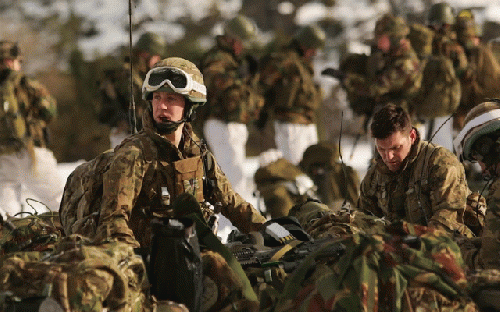The Arctic, surrounded by the landmasses of Canada, Denmark (via Greenland), Russia, Norway and the United States, was "inaccessible" until the end of the 20th century due to the layers of thick ice. Thus, there were less territorial disputes until the beginning of the (21st) century. However, with the ice caps melting rapidly, access to the Arctic oil and gas reserves, which is estimated to be worth hundreds of billions of dollars, will become easier. This prediction that has already sparked a rush for ownership.
The region is increasingly catching the world powers' attention and the aforementioned five Arctic countries are in rush to exploit the energy resources from the region. Such circumstances have given rise to plenty of disputes among the aforementioned five countries.
In the prevailing scenario, all the five Arctic countries have been moving towards militarizing the region in order to acquire each of their respective interests. While Canada has been annually conducting large-scale military exercises, known as "Operation Nanook", within the periphery of the region, it has also been participating in the Norway-led "Cold Response" military exercises within the region, where four out of five Arctic countries (except Russia) participate.
Norway has been hosting the "Cold Response" military exercises for several years, where the NATO countries are invited to participate. The fact that these exercises have been taking place within the Arctic periphery shows that the Arctic countries are militarily preparing themselves in order to safeguard their interests within the region in case of any future military escalation.
In 2016, the "Cold Response" exercise took place in the Norway's Trondheim region, which is only 500 kilometres from the Arctic Circle, and included approximately 15 000 soldiers from various countries, including four of the five Arctic states (Canada, Denmark, the United States, and Norway).
In August 2015, another Arctic state, the United States, permitted Shell to drill for oil in the Chukchi Sea, which falls within the periphery of the Alaskan Arctic. The United States Coast Guard had deployed sophisticated ships, aircrafts and other maritime assets in the Alaskan Arctic for the duration of Shell's drilling in the Arctic. However, after months of exploration campaign, Shell had subsequently declared to stop its exploratory drilling for the "foreseeable future."
In 2007, Russian scientists dived to the seabed in the Arctic Ocean and planted a titanium Russian flag (Russia claimed that it was flag of Russia's ruling party) in order to beef up their claims. Russia has already moved to restore Soviet-era military base and other military outposts in the region.
In December 2014, Russia established the Arctic Joint Strategic Command in order to protect the Russian interests in the region and the Russian Northern Fleet had become the new Command's main striking force. Questions arose about the establishment of a Strategic Command, which is usually reserved for wartime, instead of establishing a core Military District.
(Note: You can view every article as one long page if you sign up as an Advocate Member, or higher).






